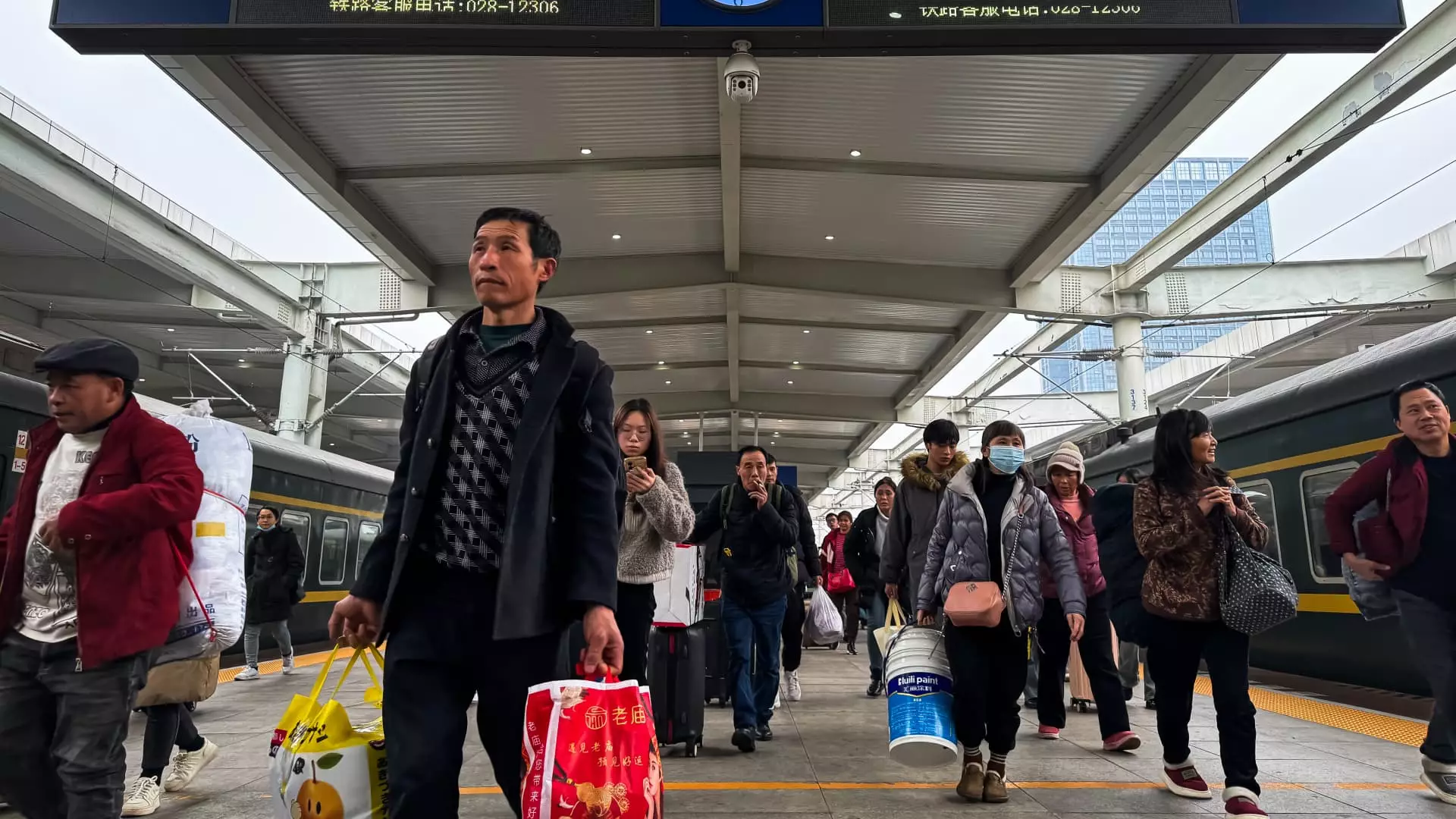Despite bold government promises aimed at rejuvenating its economy, China finds itself in a precarious position, with significant challenges looming ahead. Investors have eagerly awaited signs of a turnaround following government pledges of fiscal support, yet the anticipated results have yet to materialize. Since late September, the Chinese government has indeed cut interest rates and unveiled stimulating economic programs. However, comprehensive details regarding these fiscal measures are only expected to emerge during the annual parliamentary meeting set for March. This delay raises questions about the effectiveness of the current policies and their potential to foster genuine economic improvement.
According to the BlackRock Investment Institute, merely announcing fiscal stimulus is insufficient to address the underlying issues suffocating economic growth. Concerns about a protracted and sluggish recovery remain, as well as structural challenges that seem insurmountable in the long term. Investors are treading carefully, noting that any meaningful change in economic health appears distant, highlighting a wait-and-see approach among major investment firms.
Significantly affecting investor confidence is the decline in domestic demand, which has reached alarming levels. The latest consumer price index reveals an almost stagnant growth rate of only 0.5% in 2024, marking the slowest pace of inflation in a decade. Authorities have acknowledged that consumer spending remains tepid and that foreign investment has started to dwindle, raising alarm bells for a nation overly reliant on growth from consumption.
Beijing’s mayor, Yin Yong, echoed this sentiment, emphasizing the critical nature of fostering consumer confidence in a time of rising economic pressure. The 2% target for consumer price inflation in 2025 reflects the government’s determination to improve economic fundamentals, but the road ahead appears increasingly fraught with obstacles.
Additionally, the Chinese commercial property market faces mounting pressures, as evidenced by significant drops in rental rates for premium office spaces in cities like Beijing. The significant drop and alleged occupancy deficits in new shopping centers suggest a protracted struggle that will likely continue this year, leading analysts to brace for further downturns before any signs of recovery can emerge.
The Chinese real estate sector, historically a cornerstone of economic stability, finds itself beleaguered by regulations imposed to regulate developer debt levels, combined with the effects of the Covid-19 pandemic. Following a meeting led by President Xi Jinping targeting the sector’s decline, the government has been exploring measures to shore up beleaguered developers, who have found themselves unable to complete previously sold but unfinished properties.
Despite these government interventions, experts such as Jeremy Zook from Fitch Ratings caution that the property market remains far from stable, as high inventory in smaller cities indicates that additional declines in home prices may yet occur. This situation puts immense pressure not only on housing developers but also on ancillary sectors tied to real estate.
In a bid to stimulate consumer spending and drive demand, Chinese authorities launched a trade-in subsidy program, incentivizing the purchase of new consumer goods, particularly in the sectors of electronics and electric vehicles. Nonetheless, experts question whether such programs can catalyze a meaningful recovery in the broader consumer market. Some analysts argue that the temporary boost provided by subsidies may wane after their initial impact, leading to a return to weak consumer demand by the late year.
Nomura’s Chief China Economist, Ting Lu, aptly pointed out the potential shortcomings of relying solely on such trade-in programs to revive consumer sentiment. As the housing market continues to struggle, so does the disposable income available for home appliance purchases, casting doubt on the sustainability of a consumer-driven recovery.
China’s current economic challenges are further complicated by escalating tensions with the United States. As Beijing increasingly prioritizes domestic production in key sectors such as technology, foreign businesses face mounting pressures to adapt to a changing market landscape. The implications of these geopolitical frictions reflect a growing concern that economic isolation will not only hamper foreign investment but may also stifle innovation across the board.
The EU Chamber of Commerce in China has raised alarms regarding increased localization efforts, a move that carries the risk of higher operating costs and diminished efficiency for foreign firms. At the same time, Chinese authorities remain resolute in their claim that boosting consumption will be prioritized moving forward, committing to a future filled with regulatory adjustments aimed at fostering local economic security.
As China grapples with the complexities of reviving a sputtering economy amid rising global tensions, it remains to be seen whether the government’s interventions will indeed yield the desired results. With structural challenges, inadequate domestic demand, and an evolving geopolitical landscape, the road ahead is uncertain. Analysts and policymakers alike will be closely monitoring upcoming parliamentary meetings for clarity on how China plans to tackle these daunting hurdles, hoping for a glimpse into the country’s potential path toward sustainable recovery.

